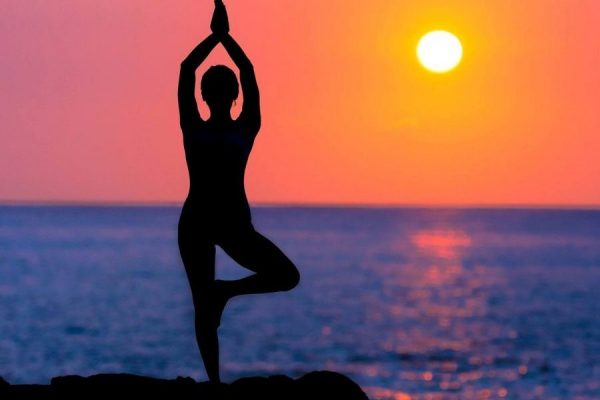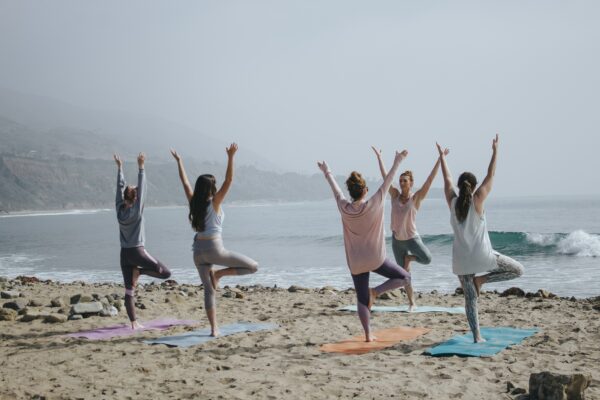Yoga
Yoga is an ancient form of exercise that focuses on strength, flexibility and breathing to boost physical and mental wellbeing. The main components of yoga are postures (a series of movements designed to increase strength and flexibility) and breathing.
The practice originated in India about 5,000 years ago and has been adapted in other countries in a variety of ways. Yoga is now commonplace in leisure centres, health clubs, schools, hospitals and surgeries.
Yoga has been found to aid longevity and there is a growing body of science showing that a regular yoga practice may benefit people with a host of chronic health conditions, including asthma, heart disease, and MS.
Yoga has a fantastic effect on the brain as well as the body and is proven to reduce depression even in those where antidepressants were not working.
Recent research also shows yoga can improve the symptoms of mild cognitive impairment which is often the precursor to Alzeimers.
What are the health benefits of yoga?
Most studies suggest yoga is a safe and effective way to increase physical activity, especially strength, flexibility and balance.
There is evidence that regular yoga practice is beneficial for people with high blood pressure, heart disease, aches and pains – including lower back pain – depression and stress.
Several small studies have found yoga to have a positive effect on cardiovascular risk factors: It helped lower blood pressure in people who have hypertension.
Another study found that practicing yoga improved lipid profiles in healthy patients as well as patients with known coronary artery disease. It also lowered excessive blood sugar levels in people with non-insulin dependent diabetes and reduced their need for medications. Yoga is now being included in many cardiac rehabilitation programs due to its cardiovascular and stress-relieving benefits.
Yoga improves balance by strengthening your lower body – particularly your ankles and knees – thereby reducing your chances of falling.
Yoga is popular with people with arthritis for its gentle way of promoting flexibility and strength.

Does yoga count towards my 150 minutes of activity?
Most forms of yoga are not strenuous enough to count towards you 150 minutes of moderate exercise as set out by government guidelines.
However, yoga does count as a strengthening exercise, and at least 2 sessions a week will help you meet the guidelines on muscle strengthening exercises.
Activities such as yoga and tai chi are also recommended for older adults at risk of falls, to help improve balance and co-ordination.
Try the yoga workout videos in the NHS site Fitness Studio.
Am I too old for yoga?
People often start yoga in their 70s, and many say they wish they had started sooner. There are yoga classes for every age group. Yoga is a form of exercise that can be enjoyed at any time and is a great way to get out and meet others to exercise together. You can join a class suitable for your fitness level i.e whether you need a chair based class or if you are able to get up and down on to the floor.
What style of yoga should I do?
There are many different styles of yoga, such as Ashtanga, Iyengar and Sivananda. Some styles are more vigorous than others, while some may have a different area of emphasis, such as posture or breathing. Many yoga teachers develop their own practice by studying more than one style.
No style is necessarily better or more authentic than any other. The key is to choose a class appropriate for your fitness level.
Where can I find a yoga class?
No specific qualifications are required to teach yoga in the UK. However, it’s generally accepted that teachers need to be insured. Some teachers may have a teaching certificate and accreditation from a yoga association.
The main UK yoga associations are:
- British Wheel of Yoga (BWY), the Sport England-recognised governing body for yoga
- Independent Yoga Network
- Iyengar Yoga (UK)
- Yoga Alliance Professionals
These associations all list teachers and classes near you on their websites. You can also search for a local class or teacher using the NHS Fitness directory.
Or contact your local gym
Sources-
NHS website
The Age well project- Annabel Streets and Susan Saunders

